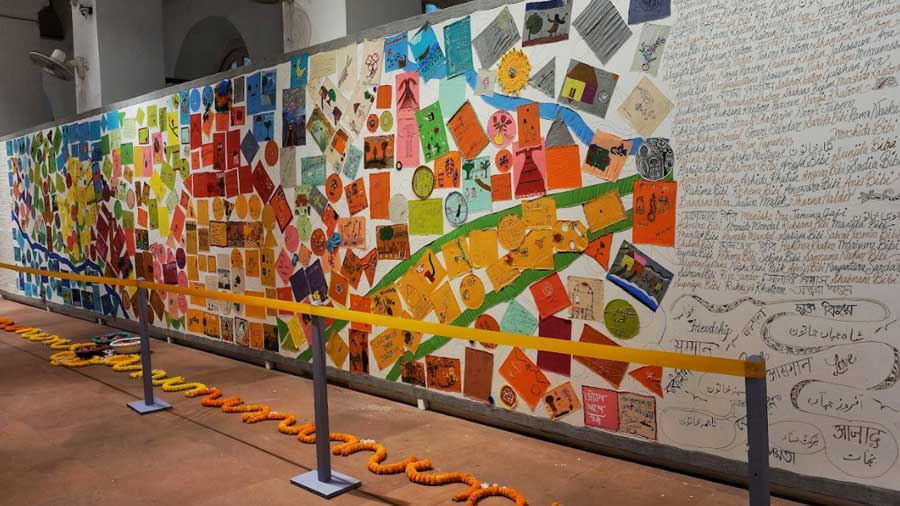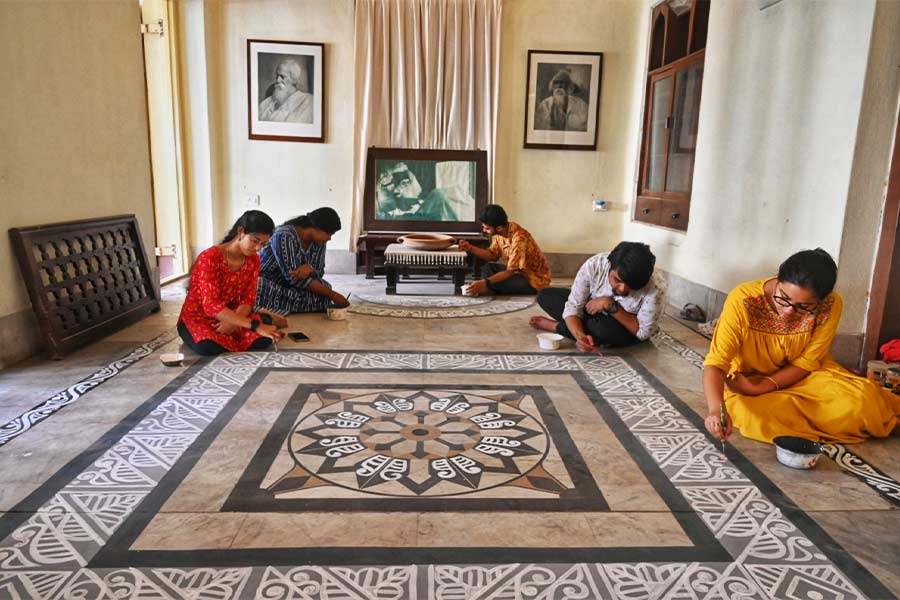“In my fantasy world I saw myself wondering, alone. I was enjoying my solitude. During this workshop I held myself in embrace several times. I also carry pain within myself, but I will not wait for someone else to come and hug me. I would rather embrace myself and alleviate my pain” – Mou
Powerful messages such as this adorn the walls of one of the halls of the Indian Museum. On the opposite wall is a stunning 41-feet long, eight-feet high tapestry of woven dreams — dreams of 354 women survivors of violence, of a violence-free, gender-equal world.
The exhibition, ‘Weaving Dreams — Women Imagine a Violence Free World’, was inaugurated at the Indian Museum on April 16 by Astrid Wege, the director of Goethe-Institut/Max Mueller Bhavan. Presented by Swayam, a Kolkata-based feminist organisation committed to advancing women's rights and ending inequality and violence against women and their children, the tapestry brings to the public realm the voices, expectations and aspirations of survivors that Swayam works with.
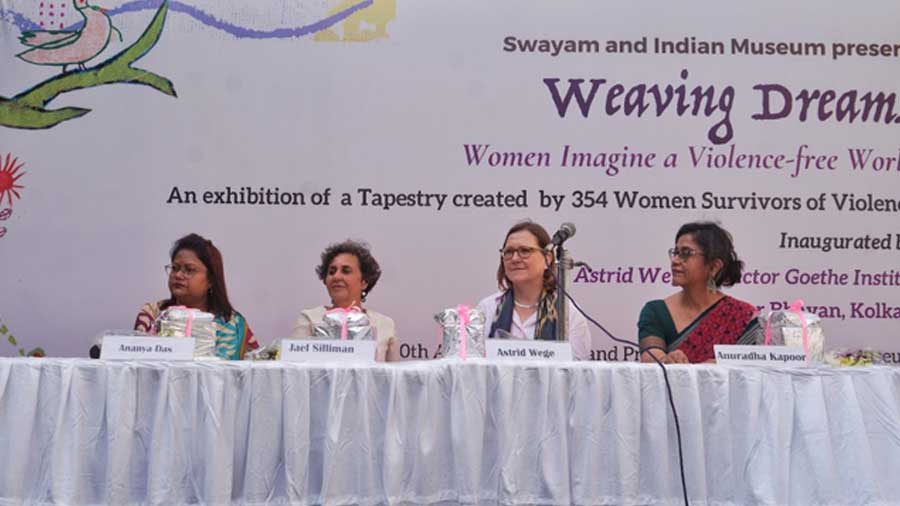
(L-R) Ananya Das, librarian, The Indian Museum; Jael Silliman, author, artist and Swayam Trust Board Chair; Astrid Wege, director, Goethe-Institut/Max Mueller Bhavan; Anuradha Kapoor, director, Swayam, at the inauguration of the tapestry at the Indian Museum
Art changes people and people change the world
“From the beginning of Swayam, we have used art as a medium of social change. Women have a lot of creativity, and given the slightest opportunity to express themselves, they flourish. Art gave them the voice to ask for social change,” said Anuradha Kapoor, the director of Swayam.
This is not the first public art project that Swayam has undertaken. In 2017, they had done an installation at the Victoria Memorial called ‘Voices of Courage and Sorrow: Women in the Dark Speak Out’ that had survivors of violence expressing their experiences. A mural on the walls of Swayam’s office documented what the women wanted to be in a gender-equal world. Another mural on the walls of La Martiniere for Girls spoke about the violence women face on the streets. For this project, they have focused on their dreams.
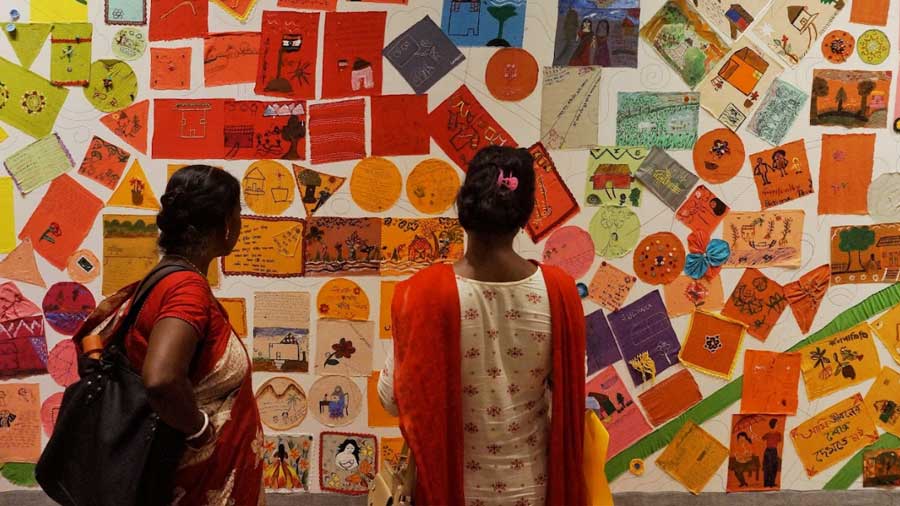
The women see their dreams come together on the tapestry
The tapestry, woven together on a white background, is made of small pieces of brightly coloured fabric on which the women have drawn, painted, embroidered or written their hopes and expectations of what a violence-free world would look like — from access to education to the right to choose, from happy families to peaceful solitude.
“The aim of this project is to give a platform for the creativity of these women, empower them with a voice that reaches out to society, and bring about social change. It is said that art changes people and people change the world and that is what we hope to do through projects like this,” said Kapoor.
The tapestry is the result of six-day-long, interactive workshops with women survivors from urban, peri-urban and rural settings that Swayam works in, through its centres in Deodar Street, Metiabruz, and Diamond Harbour. For many of the women, these workshops were the first time they had stepped out of their homes after two years of repeated lockdowns where women and children faced an unprecedented increase in domestic violence.
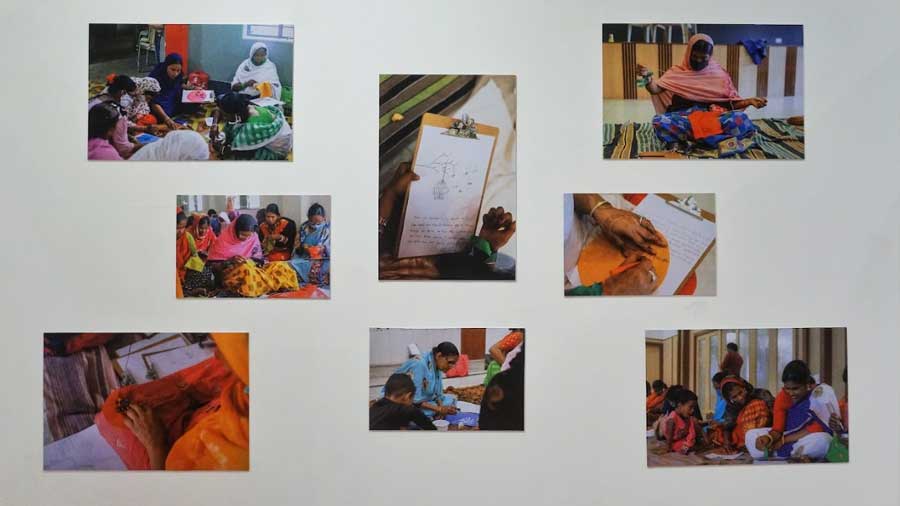
Stills from the workshops on display at the Indian Museum
Release… Evocation… Expression
The women were encouraged to dream about a violence-free world through a three-stage process of Release — where the women released pent-up feelings of pain and vulnerability and experienced joy and solidarity through music, dance movement therapy and relaxation exercises conducted by Kolkata Sanved — Evocation — which included a guided visualisation process to stimulate their creativity and self-expression — and Expression — the final part of the process where they expressed their dreams through writing, drawing and embroidery.
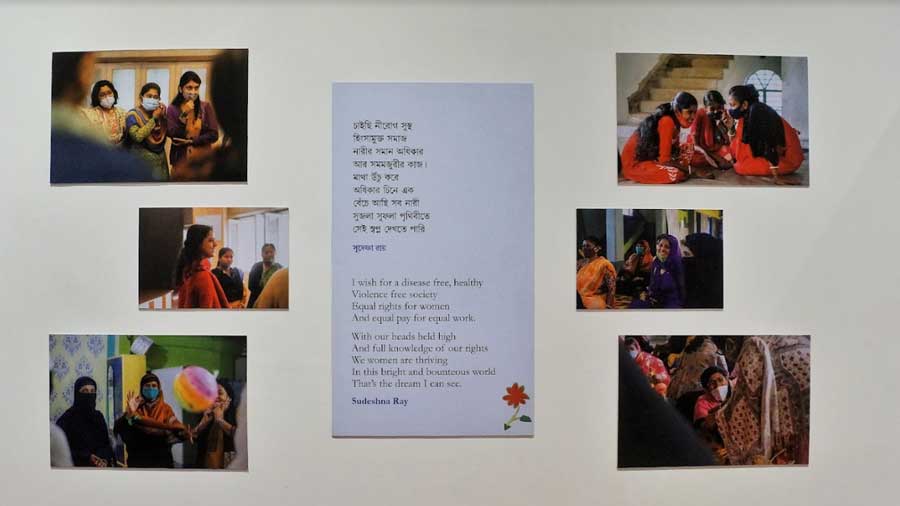
Stills from the workshops on display at the museum
Our dreams of a free blue sky where all of us can soar
“Through this process we could give voice to our dreams of a free blue sky, where all of us can soar. It was really inspiring,” said Anupama Kundri, one of the women who participated in the making of the tapestry.
The colours of the fabrics — vivid yellows, reds, blues, and greens — represent a new spring that the women dream of.
“When I was putting the compositions together, I felt like I was holding your dreams together, which is very sacred, as was putting it together to make those dreams even larger and even more powerful so everybody could dream your dream,” said Jael Silliman, artist, author, and Swayam’s Trust Board Chair, who along with Sarita Mandana, vocational crafts trainer, brought the survivors’ dreams together by arranging the fabrics into the tapestry.
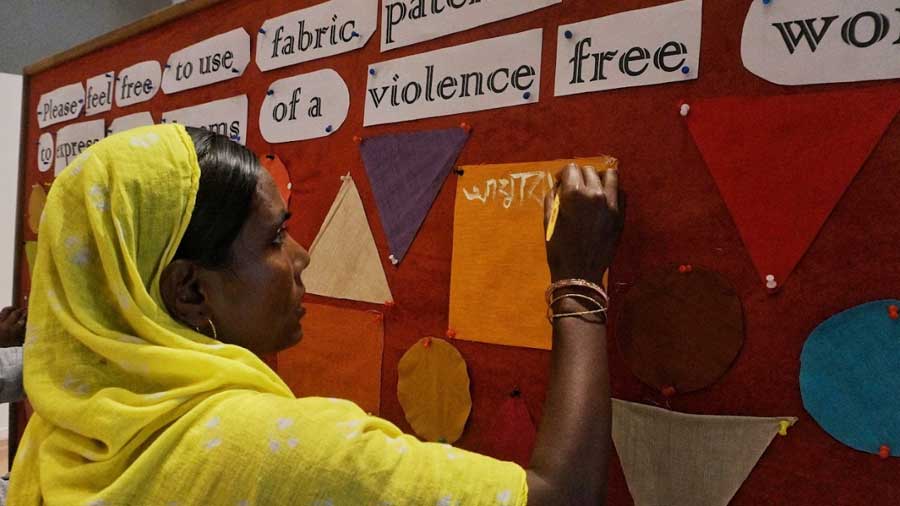
Women paint their dreams on fabric patches at the Indian Museum
You understand that you are not alone
“I share the goals of Swayam to fight for gender equality, to end sexualised violence, to fight for women’s rights and to make a better world where there is better understanding and living together of all genders. This exhibition invites all of us to learn more from you, to listen to you, to understand how you would imagine a world without violence,” said Wege, addressing the women who were part of the project.
“Creativity is a very good means to express emotions, ideas, visions and thoughts. Projects like Weaving Dreams are very important because they encourage you to come together and to get out of isolation and exchange experiences so that you understand that you are not alone and that together you can also voice more powerfully,” she added.
The exhibition, which is open to the public till April 30, will also travel to other cities that will help amplify the voices.


